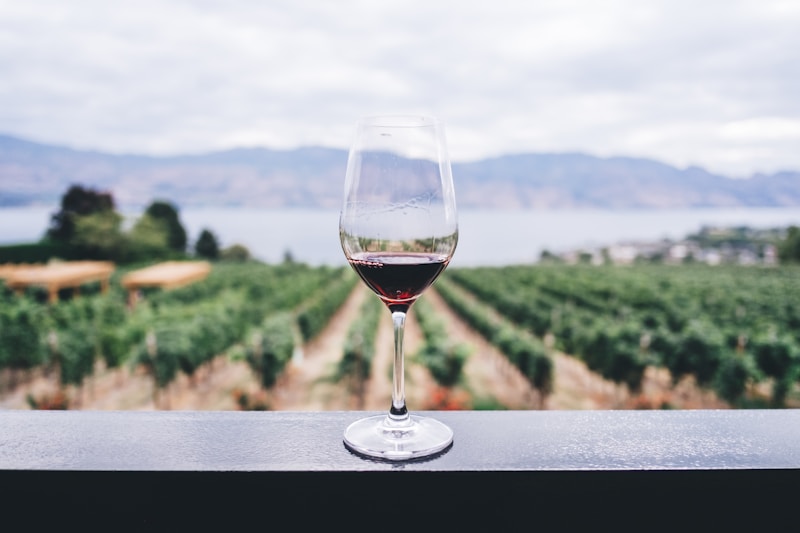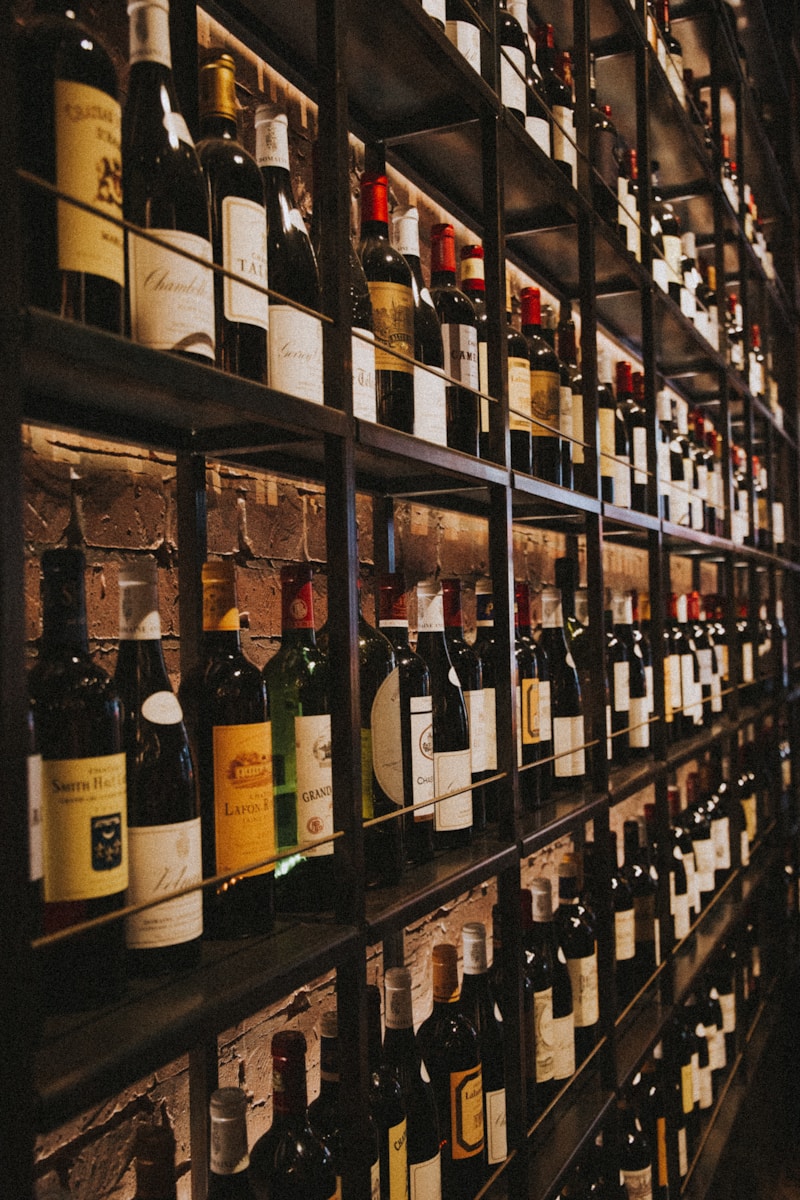This comprehensive guide breaks down every major wine type by calories, carbs, and sugar content. You will learn exactly which wines to drink, which to avoid, and how to navigate wine lists like a calorie conscious pro.
Understanding Wine Nutrition

Wine calories come from two sources: alcohol and residual sugar. Alcohol contains 7 calories per gram. Sugar contains 4 calories per gram. A wine with higher alcohol and lower sugar will have different calorie distribution than a wine with lower alcohol and higher sugar, but the total matters most.
The Sweetness Spectrum
Wine sweetness depends on residual sugar, the grape sugar remaining after fermentation:
- Bone Dry: Less than 1 gram per liter
- Dry: 1 to 10 grams per liter
- Off Dry: 10 to 35 grams per liter
- Sweet: 35 to 120 grams per liter
- Very Sweet: More than 120 grams per liter
For calorie conscious drinkers, dry wines are almost always the best choice. They deliver full wine flavor with minimal sugar calories.
White Wines Ranked by Calories
Best White Wines for Dieters
| Wine | Calories (5 oz) | Carbs | Sugar |
|---|---|---|---|
| Sauvignon Blanc | 119 | 3g | 1g |
| Pinot Grigio | 122 | 3g | 1g |
| Albarino | 120 | 3g | 1g |
| Gruner Veltliner | 118 | 3g | 1g |
| Vermentino | 120 | 3g | 1g |
| Muscadet | 115 | 2g | 0g |
| Dry Riesling | 118 | 3g | 1g |
| Chablis | 120 | 3g | 1g |
Sauvignon Blanc: The Dieter’s Best Friend
Sauvignon Blanc consistently ranks among the lowest calorie wines. Its naturally high acidity means winemakers rarely add sweetness to balance it. New Zealand versions offer bright citrus and tropical notes. French versions from Loire Valley deliver minerality and elegance. Both typically clock in around 119 calories per glass.
Best regions: Marlborough (New Zealand), Sancerre (France), Alto Adige (Italy)
Pinot Grigio: Crisp and Light
Italian Pinot Grigio is typically fermented completely dry with moderate alcohol, creating a light bodied wine around 122 calories. Its neutral flavor profile makes it versatile but may lack excitement for serious wine drinkers.
Best regions: Alto Adige and Friuli in northern Italy produce the best examples
White Wines to Approach with Caution
| Wine | Calories (5 oz) | Carbs | Sugar |
|---|---|---|---|
| Chardonnay (oaked) | 130 | 4g | 2g |
| Viognier | 135 | 5g | 3g |
| Gewurztraminer | 140 | 6g | 4g |
| Off Dry Riesling | 145 | 8g | 6g |
White Wines to Avoid
| Wine | Calories (5 oz) | Carbs | Sugar |
|---|---|---|---|
| Moscato | 160 | 20g | 18g |
| Sweet Riesling | 165 | 18g | 15g |
| Late Harvest Wines | 180+ | 25g+ | 22g+ |
| Ice Wine | 200+ | 30g+ | 28g+ |
Red Wines Ranked by Calories

Best Red Wines for Dieters
| Wine | Calories (5 oz) | Carbs | Sugar |
|---|---|---|---|
| Pinot Noir | 121 | 3g | 1g |
| Gamay (Beaujolais) | 115 | 3g | 1g |
| Cabernet Franc | 123 | 3g | 1g |
| Sangiovese | 126 | 4g | 1g |
| Tempranillo | 125 | 4g | 1g |
| Barbera | 125 | 4g | 1g |
Pinot Noir: The Lightest Red
Pinot Noir is typically the lowest calorie red wine due to its moderate alcohol content (usually 12 to 13.5%) and complete dryness. Oregon and Burgundy produce elegant, lower alcohol versions. California Pinots tend to be riper and slightly higher calorie.
Best regions for lower calorie Pinot: Burgundy (France), Willamette Valley (Oregon), Marlborough (New Zealand)
Gamay (Beaujolais): Underrated Light Red
Beaujolais from France often hits the lowest calorie counts among reds. The Gamay grape produces light bodied, low tannin wines with moderate alcohol. Look for Beaujolais Villages or Cru Beaujolais rather than basic Beaujolais Nouveau.
Higher Calorie Red Wines
| Wine | Calories (5 oz) | Carbs | Sugar |
|---|---|---|---|
| Cabernet Sauvignon | 135 | 4g | 1g |
| Merlot | 130 | 4g | 1g |
| Malbec | 135 | 4g | 1g |
| Syrah/Shiraz | 140 | 4g | 2g |
| Zinfandel | 150 | 5g | 2g |
| Petite Sirah | 145 | 5g | 2g |
| Amarone | 160 | 5g | 3g |
These wines are not bad choices; they simply have higher alcohol content driving up calories. A glass of Cabernet Sauvignon is still far better than most cocktails. But choosing Pinot Noir over Zinfandel saves about 30 calories per glass, which adds up over a week of wine drinking.
Red Wines to Avoid
| Wine | Calories (5 oz) | Carbs | Sugar |
|---|---|---|---|
| Port | 185 | 14g | 12g |
| Sweet Lambrusco | 165 | 15g | 13g |
| Chocolate Wines | 175+ | 16g+ | 14g+ |
Sparkling Wines Ranked

Sparkling wines can be excellent choices for dieters, especially the driest styles. The key is understanding the sweetness classifications.
Sparkling Wine Sweetness Levels
| Classification | Sugar per Liter | Calories (5 oz) |
|---|---|---|
| Brut Nature/Zero | 0 to 3g | 90 |
| Extra Brut | 0 to 6g | 95 |
| Brut | 0 to 12g | 98 |
| Extra Dry | 12 to 17g | 105 |
| Sec/Dry | 17 to 32g | 115 |
| Demi Sec | 32 to 50g | 130 |
| Doux/Sweet | 50g+ | 150+ |
Important note: The labeling is confusing. Extra Dry is actually sweeter than Brut. Always choose Brut or drier for lowest calories.
Best Sparkling Wines for Dieters
- Brut Champagne: 95 to 100 calories, the gold standard
- Brut Cava: 90 to 95 calories, excellent value from Spain
- Brut Prosecco: 98 to 105 calories, slightly fruitier
- Brut Cremant: 95 to 100 calories, French alternative to Champagne
Rose Wines
Rose wines vary widely depending on sweetness. Dry roses from Provence are excellent diet choices. Sweet pink wines like White Zinfandel are calorie traps.
Best Rose Wines for Dieters
| Wine | Calories (5 oz) | Carbs | Sugar |
|---|---|---|---|
| Provence Rose | 120 | 3g | 1g |
| Spanish Rose (Garnacha) | 118 | 3g | 1g |
| Dry Italian Rose | 120 | 3g | 1g |
Rose Wines to Avoid
| Wine | Calories (5 oz) | Carbs | Sugar |
|---|---|---|---|
| White Zinfandel | 145 | 10g | 8g |
| Sweet Pink Moscato | 160 | 18g | 16g |
Wine Serving Size Matters
All nutritional information above assumes a standard 5 ounce pour. Restaurant pours often exceed this significantly:
- Small pour: 4 oz (multiply above by 0.8)
- Standard pour: 5 oz (values as listed)
- Generous pour: 6 oz (multiply above by 1.2)
- Large wine glass filled: 8 to 10 oz (multiply by 1.6 to 2)
A large restaurant pour of Zinfandel could easily hit 250 calories, while a standard pour of Sauvignon Blanc is under 120. Serving size has as much impact as wine selection.
How to Order Wine at Restaurants
Safe Questions to Ask
- Do you have any dry Sauvignon Blanc or Pinot Grigio?
- What is your driest white wine by the glass?
- Do you have a lighter red, perhaps a Pinot Noir?
- Is this Riesling dry or off dry?
- Do you have Brut Champagne or Prosecco?
Red Flags on Wine Lists
- Wines described as jammy, sweet, or fruit bomb
- High alcohol percentages (over 14.5%)
- Dessert wine sections
- Late harvest designations
- Residual sugar information showing more than 10g per liter
Wine and Keto: Special Considerations
For keto dieters with strict carb limits, wine selection becomes even more critical:
Keto Approved Wines (Under 4g Carbs per Glass)
- Dry Sauvignon Blanc
- Pinot Grigio
- Dry Riesling
- Brut Champagne
- Pinot Noir
- Dry Rose (Provence style)
Wines That Will Kick You Out of Ketosis
- Moscato
- Port
- Sweet Riesling
- White Zinfandel
- Dessert wines
Building a Diet Friendly Wine Collection
Stock these wines for consistently low calorie options:
White Wines to Keep on Hand
- Sauvignon Blanc from New Zealand or Loire Valley
- Pinot Grigio from Alto Adige
- Albarino from Spain
- Dry Riesling from Alsace or Germany (look for trocken)
Red Wines to Keep on Hand
- Pinot Noir from Oregon or Burgundy
- Beaujolais (Gamay)
- Chianti (Sangiovese)
Sparkling to Keep on Hand
- Brut Cava for everyday
- Brut Champagne for special occasions
Conclusion
Wine can absolutely fit into a healthy diet when you choose wisely. Dry whites like Sauvignon Blanc and Pinot Grigio, light reds like Pinot Noir and Gamay, and Brut sparkling wines all deliver wine enjoyment at reasonable calorie costs. The wines to avoid are sweet varieties and fortified wines that pack sugar along with alcohol.
Remember that serving size matters as much as wine selection. A modest pour of almost any dry wine is healthier than a large glass of even the lightest option. Use our DrinkLeader database to look up specific wines and make informed choices.
Nutritional values are estimates based on typical wines of each type. Actual values vary by producer and vintage. When possible, check specific producer information.
]]>